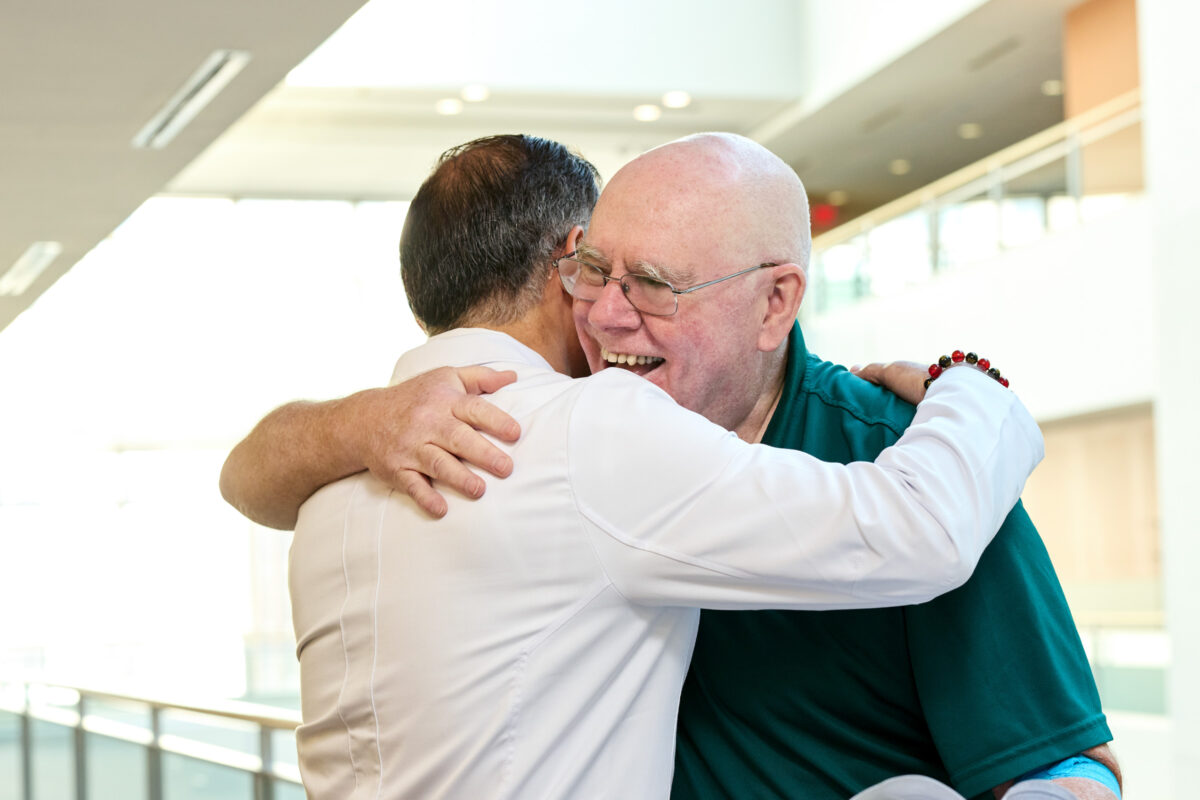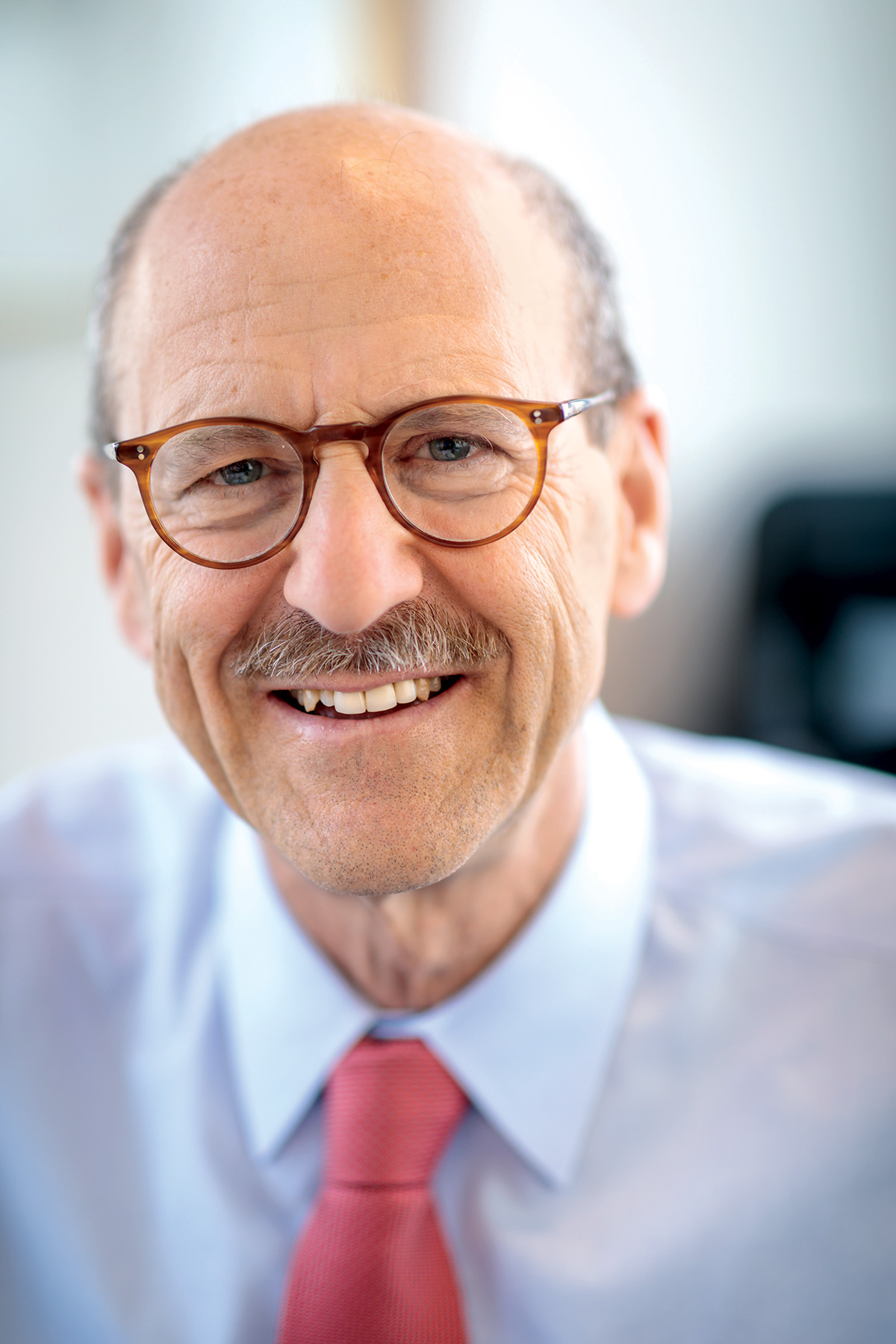
In her book “Illness as Metaphor,” Susan Sontag writes, “Everyone who is born holds dual citizenship, in the kingdom of the well and in the kingdom of the sick. Although we all prefer to use only the good passport, sooner or later each of us is obliged, at least for a spell, to identify ourselves as citizens of that other place.”

What does it mean to come home, so to speak, to that place of illness? And how can we, an institution charged with the sacred task of guiding people through that kingdom of the sick, make their time there better, calmer, and as brief as possible?
At WashU Medicine, we know that the answer begins with a patient-centered approach to treatment. Siteman Cancer Center — based at Barnes-Jewish Hospital and Washington University School of Medicine in St. Louis — has always understood that prioritizing the patient experience as they find their way in “that other place” is paramount. And the new, first-of-its-kind ambulatory cancer building was designed with significant patient input to make sure that our cutting-edge, research-informed and multidisciplinary care is delivered in a way that centers patients’ needs while prioritizing their comfort and convenience.
But we also know that the best patient care relies on the absolutely essential relationship between clinic and lab. At WashU Medicine, the most cutting-edge cancer research informs Siteman’s state-of-the-art clinical care, and that care deepens and expands our research to move the field forward. And Siteman — now celebrating its 25th anniversary — has in this brief time become one of the most impactful cancer centers in the world, one of a handful of places where cancer care is steeped in and deeply informed by research. And we have incredible momentum, with WashU Medicine at No. 2 in National Institute of Health (NIH) funding and Siteman in the top tier of National Cancer Institute-designated Comprehensive Cancer Centers, one of only a handful to receive an “exceptional” rating. We’re also among the top five U.S. cancer centers when it comes to the volume of patients we serve.
At the heart of this relationship between clinic and lab is our faculty, a group known for its doggedness, its insistence on never resting on laurels, and for always looking to push at the boundaries of what is said to be possible in disease prevention and treatment.
There’s Timothy J. Eberlein, MD, who has led Siteman from its very beginning and set the tone of excellence, along with the strong foundation of research and clinical care that has positively impacted so many lives. Graham A. Colditz, MD, DrPH, the world’s leading cancer epidemiologist, has advanced the use of population data, deep clinical and multi-omic phenotypes to identify the best approaches for cancer prevention and led the implementation of programs that are already successfully reducing cancer mortality in urban and rural areas of Missouri with astounding efficacy. And then there’s the pioneering work of John F. DiPersio, MD, PhD, who helmed the Division of Oncology for 25 years and whose research has dramatically improved the success of bone marrow transplantation for patients with blood cancers. He has also developed innovative cell-based immunotherapies that now are in clinical trials. His successor, Daniel C. Link, MD, also an expert in understanding and treating blood cancers, is not only a great new leader for our oncology division but a key player in our efforts to more rapidly shepherd our promising discoveries through the drug development process so that they can save the lives of patients. I’m also thinking of Timothy J. Ley, MD, who was the first in the world to sequence a patient’s cancer genome, ushering in precision medicine approaches to leukemia and other cancers. And thanks to truly transformative research by Robert D. Schreiber, PhD, we understand how cancer cells evolve to escape detection by the immune system; his advances are the basis upon which today’s successful immunotherapies have been built. These are just a few examples of an absolutely incredible faculty that has accomplished things previously thought to be impossible — a faculty that is always striving to do more.
As you’ll read throughout this issue, we find ourselves in a moment of rapid progress in so many areas of cancer treatment. Our paradigm of precision medicine is allowing us to address one of its most pressing challenges: understanding which forms of cancer are aggressive and require intensive therapy, and which are not and require a different course of treatment. We are already leveraging genomic research, and new technologies in imaging and artificial intelligence are allowing us to customize treatment for each patient and promise for more effective and less arduous treatments. One of the most exciting projects currently underway uses new imaging technology together with artificial intelligence to be able to predict with extraordinary accuracy which forms of early breast and lung cancer are likely to progress and which might require minimal, or even no, therapy. We also are investing in a visionary initiative that will accelerate drug development across WashU Medicine to get more of the lifesaving therapeutics and diagnostics coming out of our labs to the people who need them. Projects that improve the effectiveness of cancer therapies are advancing more urgently, even as you read this magazine.
I like to talk about the virtuous cycle of academic medicine, in which we invest in education and research to bring improvements to clinical care, better outcomes for patients and better health for the community, particularly in our commitment as a safety net provider for vulnerable patients. In turn, our clinicians care for the community and identify important areas for further scientific innovation.
Our WashU Medicine clinicians at Siteman are just a perfect exemplar of that cycle: taking care of patients, doing research to understand the different forms of cancer and develop better treatments for all of them, and going out into the community to engage in prevention work. That last one is a particular point of pride: Working together with Siteman, our efforts have led to a marked reduction in breast and colorectal mortality rates in our local and regional communities.
“We are on the precipice of incredible discovery and critical advancement of human health.”
But we must do more. With the opening of the new ambulatory cancer building, we can and must take our community outreach to the next level. This means doubling down on our prevention efforts by increasing screenings and reducing mortality for all forms of cancer, and it also means increasing access to new, research-informed therapies and approaches. Most of the people who undergo cancer treatment do so without being a part of the most brilliant, cutting-edge ideas or the process by which we determine how to improve our care. It’s time to make sure anyone who has the potential to benefit from a clinical trial has access to one, and I want WashU Medicine — with Siteman and BJC — to lead the way.
We are on the precipice of incredible discovery and critical advancement of human health. I hope you’ll take the time to read this issue and learn more about what’s happening in cancer treatment and prevention at Siteman Cancer Center and WashU Medicine.
— David H. Perlmutter, MD, Executive Vice Chancellor for Medical Affairs, the George and Carol Bauer Dean of the School of Medicine and the Spencer T. and Ann W. Olin Distinguished Professor
National leaders in cancer
Siteman Cancer Center is a leader in cancer care, built on the foundation of collaboration between WashU Medicine and Barnes-Jewish Hospital. This partnership has fostered ground-breaking research and life-changing care that has led to the prestigious recognition of Siteman as a Comprehensive Cancer Center by the National Cancer Institute (NCI).
- 75,000 unique patients served annually
- 600 WashU Medicine physicians and scientists
- 700 active therapeutic clinical trials per year
- 9,000 patients enrolled in clinical studies each year
- $250M in research grants and contracts in 2023
- 160 multi-investigator grants, including three SPORE grants
- 196 patent filings by investigators in 2023
- 13 new startup companies since 2019
- 200,000 preventive screenings performed in 2023
- 31% city and 33% county breast cancer mortality reduction in Black St. Louis patients over eight years
- 20 Missouri counties removed from list of colorectal cancer hot spots
Published in the Autumn 2024 issue


